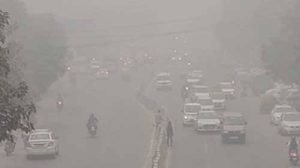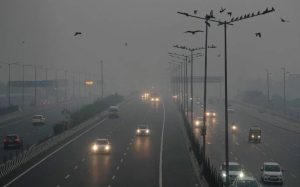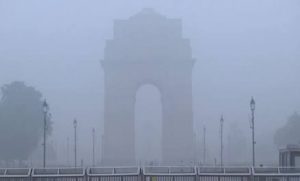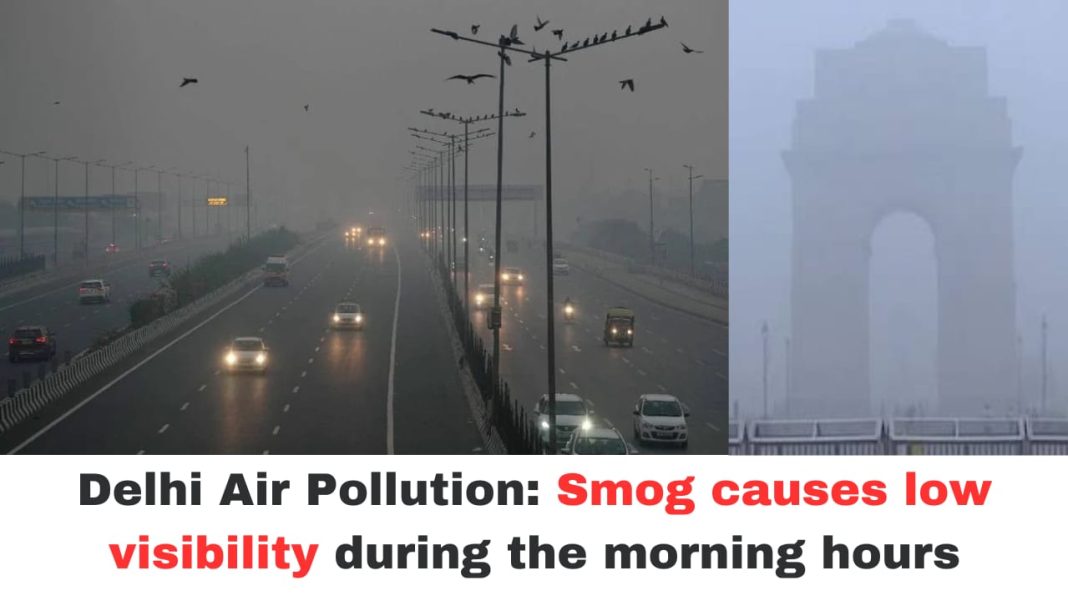Digital News Guru Delhi Desk:
Delhi is once again grappling with hazardous air pollution levels, with the air quality index (AQI) hovering in the severe category. The combination of thick smog, shallow to moderate fog, and mist has significantly reduced visibility, especially during the early morning hours, causing widespread disruptions and public concern. The smog, formed from high concentrations of pollutants trapped close to the ground, has become a regular menace in the capital, affecting daily life and public health.
Causes Behind the Crisis
The ongoing air pollution problem in Delhi is the result of several contributing factors, making the situation especially dire. The winter months typically see a spike in pollution due to a confluence of weather conditions and human activities. One major cause is the burning of crop residue, or stubble burning, in neighboring states like Punjab, Haryana, and Uttar Pradesh. Farmers often burn leftover crops after harvest to clear their fields quickly, releasing massive amounts of particulate matter and toxic gases into the atmosphere. These pollutants are carried to Delhi by northwesterly winds, worsening the already poor air quality.
Local pollution sources also exacerbate the problem. Vehicular emissions, construction dust, and industrial pollutants are significant contributors to the city’s air pollution. In winter, the drop in temperature causes an inversion layer to form, trapping pollutants near the surface and creating a dense layer of smog. Additionally, Delhi’s high population density and the extensive use of fossil fuels mean that emissions are a constant challenge.

Impact on Health and Visibility
The health impact of this persistent pollution crisis is severe. Doctors and health experts have warned of the immediate and long-term effects of breathing in toxic air. Short-term exposure can cause respiratory issues, eye irritation, headaches, and reduced lung function. For vulnerable populations, such as children, the elderly, and those with pre-existing respiratory conditions, the air pollution poses an even greater risk, leading to hospitalizations and exacerbation of health problems.
Visibility is another major concern. With the smog and fog reducing clarity on the roads, morning commuters are struggling with dangerous driving conditions. Traffic accidents and delays have increased, affecting transportation networks. Train and flight schedules are also being disrupted due to poor visibility, creating chaos for travelers and complicating logistics.
Government Response and Measures
In response to the hazardous air quality, the Delhi government and central authorities have introduced emergency measures. The “Graded Response Action Plan” (GRAP) has been activated, which includes restrictions on vehicular movement, suspension of construction activities, and a ban on firecrackers. Authorities have also intensified monitoring of industrial emissions and waste burning. The government has been encouraging the use of public transport, implementing carpooling initiatives, and spraying water on roads to reduce dust.

However, experts argue that these measures are reactive rather than preventive. Environmentalists emphasize the need for a long-term action plan that addresses pollution at its source. Efforts must include more sustainable farming practices, better waste management, stricter enforcement of emissions standards, and an accelerated transition to renewable energy sources.
Public and Expert Reactions
Residents of Delhi have expressed growing frustration with the lack of long-term solutions to the recurring pollution crisis. Parents are particularly concerned about the health impact on their children, as schools are often forced to close during periods of extreme air pollution. Social media platforms are flooded with posts and discussions about the suffocating conditions, with many calling for urgent and lasting reforms.
Public health experts continue to stress the importance of wearing masks and using air purifiers indoors. They recommend that people, especially those in sensitive groups, avoid outdoor activities during peak pollution hours. Nonetheless, there is widespread acknowledgment that individual precautions are insufficient to tackle the crisis on a larger scale.
Looking Ahead: Potential Solutions
While the current situation appears grim, there are several approaches that could improve air quality in the future. One key area of focus is agriculture. The government is exploring alternatives to stubble burning, such as the use of technology to convert agricultural waste into energy or fertilizers. Subsidies and incentives for eco-friendly farming methods are also being considered.

Urban planning and infrastructure improvements are equally critical. Expanding green spaces, upgrading public transportation, and promoting electric vehicles could significantly cut emissions. Additionally, greater investment in renewable energy and stricter enforcement of environmental regulations for industries are necessary to bring about meaningful change.
Conclusion
Delhi’s air pollution crisis is a complex and recurring problem that requires both immediate action and long-term planning. As the city continues to grapple with hazardous smog and poor air quality, the impact on public health and quality of life remains dire. While emergency measures offer some relief, sustainable solutions must be prioritized to prevent this crisis from becoming a permanent reality. Only through coordinated efforts between governments, industries, and citizens can Delhi hope to breathe cleaner air in the future.
You May Also Read: Varanasi Aarti: Raghav Chadha and Parineeti Chopra Participate in Sacred Ganga Aarti








